Score One For Analog: An Interview With Soundtrack Recording Engineer Shawn Murphy
From the archives: Michael Fremer interviews Shawn Murphy
(This Interview originally appeared in Volume 1, issues 5/6 of The Tracking Angle, published in the winter of 1995/96).
Ever hear an LP copy of Maurice Jarré's soundtrack to "Dr. Zhivago"? It was released by MGM during the label's "Sounds Great In Stereo" era. They'd put that statement on the record jacket whether or not what was inside was really recorded in stereo. "It would sound great if it had been recorded in stereo, but unfortunately, it wasn't, " is what MGM meant to put on the cover, I'm sure, but they probably didn't have room.
The "Dr. Zhivago" track was recorded in genuine stereo. Unfortunately, it sounds as if it was recorded in the hanger belonging to the genuine Goodyear Blimp instead of on a scoring stage. Soundtrack LPs were "iffy" in those days, even when the original score sounded good in the movies on a 70MM six track magnetic soundtrack. And some LPswere great: check out the soundtrack to "How The West Was Won' (MGM 1SE5 LP), and of course there are Mancini's "Living Stereo" soundtrack albums.
The advent of Dolby stereo in the 1970's meant that a single compatible mono/stereo optical print could be struck playable in any movie theater. Studios began paying more attention to the sound quality of the music recordings, and of course stereo became the rule.
During the 1980's, pop music invaded soundtracks: it seemed as if movies were being written around pop tune packages, and indeed that was the case. While that phenomenon continues to spawn top selling CDs ("Sleepless In Seattle", "Forrest Gump" etc.), there has been a resurgence in the popularity of symphonic scores, much to the delight of cinema "traditionalists". The two musical forms can coexist: Epic issued two "Gump" soundtracks- one containing the pop tunes, one the symphonic score.
Back in 1981 when I was working at Walt Disney on the soundtrack to "TRON", my path crossed with recording engineer Shawn Murphy. It was nothing more than a perfunctory introduction in a darkened dubbing theater. My next meeting with Murphy was via LP: the 1989 soundtrack to "Glory" (Virgin Movie Music 1-91329 LP). which was reissued by Classic Records on 180g LP. It was and is an astonishing sounding recording: breathtaking in its size, weight, image specificity and dynamic range. "Glory" is a soundtrack any so-called "audiophile" label would be proud to have released.
Murphy has become one of Hollywood's busiest and most respected scoring engineers, having established close working relationships with Hollywood's most sought after composers, including James Horner and John Barry.
The sound on "Glory" was no fluke: Murphy has repeated that magnificent feat repeatedly, recording mostly to analog with just a few microphones. Getting an industry fixated on budgets and production schedules, to accept that minimalist production style was an accomplishment in and of itself, but Murphy's results speak for themselves.
The reason Shawn Murphy strives to produce audiophile quality recordings is simple: Murphy is an audiophile and a music lover. He's got a VPI TNT 3 turntable with a Spotheim SPJ arm and Lyra Clavis cartridge, a Krell KPS 20 CD player, a Jadis JP-80 pre-amp, Belles Labs 1001 amps and a pair of Wilson Audio X-1s. (probably updated since then! -ed.)
There are those in the "number crunching" wing of the engineering community and elsewhere who disparage audiophiles- especially those who like vinyl -as delusional individuals who spend absurd amounts of money to obtain sound at home that bears no relationship to either real music or to what's on that elusive master tape. You've probably heard the argument from digiphiles and "mid-fi" types. Stereophile publishes bitter letters from such individuals all the time.
Recently, during a rare break in his busy schedule, I had a chance to sit down (via telephone) with Shawn Murphy and talk about his work, and his love of music and good sound.
MF: The first time that our paths crossed was at Disney back in 1980 or 1981, and you were recording either the digital "Fantasia" replacement soundtrack or "Something Wicked This Way Passes." Is that what you were working on at that point?
SM:Probably it was one or both of the above, Yeah. My guess is in '81 we were in preparation for that digital "Fantasia."
MF: Which we can talk about in a few minutes, but do me one favor and just trace me the events which led you to be on the Disney lot engineering film scoring sessions back in 1981. Just, you know, some biographical background.
SM: Okay. Well it dates back actually to about 1971 or '72 when I was working at Disneyland as a sound supervisor. And this is after all of my educational background complete and a try at teaching university in theater, which is my specialty, at graduate school.
MF: Where did you go to school?
SM: I went to Stanford - an MFA in theater technology.
MF: Oh. So you're a California boy.
SM:Yeah. I'm actually a Los Angeles person.
MF: Oh.
SM: But still I did my university in San Francisco. None of which was officially connected at all with what I'm doing now, as usual. My undergraduate major was history, and I had a pretty heavy involvement with music but no official music degree.
MF: Right, but this was something that was always in you?
SM: I played musical instruments since I was in third grade. I was a brass player, and I played all the way through college and graduate school and then came to the realization after that time that I was never
gonna make a living at it.
MF:And were you a record collector and an audiophile?
SM: Always. I was a collector and sort of an infant audiophile, I guess you might say. I was interested in sound equipment and recording all along. And this involvement with theater, connected me technically with lighting and sound, and I took that degree, because I had been interested in theater all along at Stanford. Well, I came to Southern California to teach that and did teach that at Cal Arts for about a year and a half. And then there was the usual cut back where all of the technical theater faculty was let go at one time.
MF: What year was that?
SM:That was 1973
MF: So you weren't a victim of Proposition 13. That came later.
SM: No, I think it was just-it's a Disney funded organization, and I think they were just reshuffling their priorities-despite the fact that we had a really terrific program. There were six faculty members and we were all sort of dismissed at the same time. It's still funded by the Disney Foundation Cal Arts, California. Anyway, in the meantime I'd been working at Disneyland and had wound up as a supervisor in the entertainment sound department there, and worked there for a total of almost four years in entertainment sound, parades, special events, wiring sound systems, supervising and making recordings for any live event. Any non-ride oriented sound requirement.
MF: Non-ride oriented. So we can't blame you for "It's a Small World After
All?"
SM: Uh, please.
MF: 'Cause if we could, that would be great.
SM: It would be great to have the person to blame for it wouldn't it?
MF:Yeah it would.
SM: So my involvement wasn't directly with the rides, although I wound up in the same department which deals with that as well.
MF: How connected was that to the studio itself? Was it a totally separate entity?
SM: Well it wasn't very connected at all, but here's the connection for me. While I was working at the park, I met some people who worked at what was then called WED Enterprises (a division of Disney)-the people who designed the amusement park.
MF: Right.
SM: The rides and all the engineering. And a couple of people there and I became friends, and ultimately the engineer who I'd met and was working at WED wound up working at the studio, the Disney studio -as the assistant sound department head. We had maintained a friendship all along, and our paths had diverged and crossed again many times since 1973/'74/'75-that area. I had gone on and worked primarily in television, and my specialty in television for many years was reinforcing and recording systems for special event shows such as award shows, big musical specials, things like that. Some of which I just designed systems for, and some of which I mixed. Anyway, we kept track of each other and I had wound up at CBS Television about 1977 or '78, and had been mixing shows there for a few years, and this friend who wound up at Disney studios had inquired as to whether I would be interested in working just occasionally part time as sort of a substitute music recording person at the studio. This was the old Disney regime when the sound department was not a big operation. It was kind of a very friendly small operation, and the same person that was the scoring mixer was also the music re-recording mixer. And he wound up being busy in the theater much of the time as a re-recording mixer, and at that point they needed someone to occasionally substitute as a scoring mixer, and that was where my involvement with the studio started.
MF: Now at that point in time Disney was not what you'd call a very active studio as I remember.
SM: Very, very much the opposite,. The studio was producing maybe two or three feature films a year. The animation division was, in the mode of producing one picture every two or three years.
MF: There wasn't a lot going on. There wasn't much television. Their main emphasis at the point where I became involved, which is 1981 or so, was the Epcot project. And my/my first toe in the water at Disney was to record some tracks for Epcot, and I was brought in just, on a daily basis when I was available to go over there and record individual musicians or orchestras, whatever was required
MF: Right on the lot?
SM: Right on their lot on the scoring stage which was a small stage and it is, kind of thankfully now not in existence anymore, because it was really too small for any kind of major orchestral recording.
MF: And I imagine at that time the equipment they had on hand was probably fairly old?
SM: Well it's interesting how it wasn't too old but it was pretty antiquated.
MF: Yeah, I know, cause when we did "Tron", they didn't have high speed dubbers.
SM: They didn't have high speed dubbers for a couple of years after that in fact. It's interesting because they bought some new equipment. I think that when you were there with "Tron" they did have that Harris console, which was a relatively new console.
MF: That's right. They made a big deal out of that
SM: But they didn't have, you know, anything connected to it which was modern at all.
MF: That's why we took the movie off the lot.
SM: Yeah you went down to Lion's Gate.
MF: You can talk about a friendly sound department, but they weren't too friendly when I did that.
SM: Well the funny thing about the friendliness was I think that, in your situation you were very much pushing against the tide at Disney and it was very much a traditional place. It was very much "We've always done it this way, and thisis..."
MF: That's right
SM: And, "This is old school film," and while there's some valid arguments to the old school film approach for some things, you know, there's also some very good arguments for change and for new techniques.
MF: Well they were compressing the dialogue tracks immediately, for one thing.
SM: Oh, they were compressing probably everything.
MF: They were compressing the rushes (the daily developed picture and sound) and that was it, and that's what was being used.
SM: Yeah.
MF: I tried to stop that, and it was very difficult.
SM: Hard to do, yeah. I mean even multitrack music recording was really not a very common thing there. Most of the music recording prior to 1978, '79 '80 was done straight to film. Three or four track film. No multi-track whatsoever.
MF: Well some of our readers are probably saying "Hey, that's good"!
SM: Well if it was done right it probably could be good.
MF: Okay so now let's just talk about "Fantasia" for a minute. I remember being brought to the big mixing stage, and they sat us down and they played us that track.
SM: Where at Disney?
MF: Yeah, it was at Disney. Now who was the guy in charge ofthat- who conducted the orchestra?
SM: Oh, Irwin Kostal.
MF: That's right.
SM: Right. He just passed away about a year ago.
MF: Anyway, he sat everybody down and was very enthusiastic about this digital recording.
SM: Right.
MF: And I wasn't. What was your take on what it sounded like?
SM: Well, it was much different from what we had previously heard. You know, it was a new thing, and it was a technology that none of us were very familiar with, and we got familiar on that picture with it.
MF: Was that the 3M system?
SM: It was the 3M system.
MF: Which actually was pretty good from what I've heard from others.
SM: Probably one of the best. As we've gone down the digital road it's gotten less and less good.
MF: That was a 50K sampled system?
SM: It was 48 slash 50- the sampling frequency depends on the speed of the machine
MF: There were no "digital outs" in those days, so the only way you got a signal out was after it was converted back to analog, correct?
SM: Well it ultimately did have digital outs, but it was sort of directly on a spigot right off a circuit board. And it could make machine to machine transfers, but it was not in a digital format that any other machine would recognize. It was proprietary and only worked with other 3M machines.
MF: When it worked, from what I've been told. Did you have a lot of trouble
with that? Was it exciting working with something like that ?
SM: Well it was exciting. I had worked a little bit with it prior to the "Fantasia" project, and it was maddening because the darn thing was very difficult. It wasn't made to synchronize. It wasn't made to operate in the studio environment and it was a problem. It cost us some time. when we discovered that digital copies didn't sound the same as the master.
MF: Right.
SM: Analog copies off of the machine and back to the converter sounded very different. You know, it was a generation lost at least of the magnitude of an analog generation. It was not a very satisfying situation except the digital world was so new to us that we were sort of in the process of getting used to it and trying to figure what would be the best way to utilize the technology if we could use it at all.
MF: Did you find yourself altering your favorite mic positions, and how you miked things?
SM: Yeah. I think that was a good and a bad part of that. Because what I wound up hearing was not what I expected sometimes. You would alter microphone selection and pre-amp selection and mic positions to get what you thought was going to be an improvement which ultimately maybe was, maybe wasn't.
MF: Now, speaking of mic positions, when I listened to recordings you've made- I sat down today and played a whole stack and I have to say it certainly was a pleasurable experience-I was amazed at some of the sounds. There's a uniformly great sound on those things, different in each case, but uniformly great. When I listened to these orchestral recordings, I'm reminded of the big wide sound stage recordings that Kenneth Wilkinson used to create for Decca. Is there any similarity to how you mike things? You are familiar with what he did?
SM: Yeah, I'm very familiar with it, and you basically hit the nail on the head in terms of the style that I have been emulating. That's it. I mean it's a "Decca tree" and it's outriggers, and very little else.
MF: So explain that to our readers who aren't familiar with what that is.
SM: Sure. Well a Decca tree is a system that Decca Records developed and Kenneth Wilkinson was probably the engineer most responsible for the Decca tree's configuration in stereo recordings. It consists of three microphones in a triangular array that are positioned directly over the podium. The microphone type that was used primarily was the Neumann N50 in the Decca tree, and that is a mike which was omni-directional at low frequencies and becomes increasingly directional with frequency so that whereas at 100 Hz or less or even up to 1,000 Hz. you have basically an omnidirectional pattern. At 5 kilohertz you have a tightening of the pattern, and at 10 kilohertz and above you have what's essentially a cardiod to hypercardiod microphone which gives you the ability to pick up a sound at distance with some specificity. It gives you the ability to reach a little bit at higher frequencies as opposed to having a diffused sound field of high frequency.
MF: Well the image specificity on these recordings is absolutely astounding. The detail.
SM: Right. A lot of that has to do with the M50. The M50 is a tube microphone and it also has let's say a boosted low frequency performance, but an enhanced low frequency performance, in that it has a big warm extended low end.
MF: Well, that's also on these CDs. I mean the bass response is absolutely astounding.
SM: Right.
MF: It's superb.
SM: And it has a slightly rising frequency response characteristic starting at- depending on the type of M50, there are a number of different types of M50's around- but sometimes as low as one kilohertz- but always by five kilohertz, a rising characteristic so that you get a response peak somewhere in the 10 to 12 kilohertz range, and then a shelf and slow attenuation of high frequencies above 15 kilohertz, which gives you a very extended smooth high end, again with a little extra reach.
MF: Now you're using those M50s?
SM: Yeah, I have six M50s of my own. You'll find that there are a lot of good engineers that are using M50s now as their basic room pickup. The spacing of the M50s is variable and it's sometimes as wide as a six foot triangle, and sometimes as narrow as a thirty inch triangle depending on the room, depending on the kind of image you're going for. The height of the tree varies from eight and a half to twelve and a half or even thirteen feet, depending on the room and the acoustics.
MF: Now you mentioned outriggers. Those are extra microphones?
SM: Two additional mics that are sometimes referred to as outriggers and sometimes referred to as string boosters. They are hung—spaced to the left and right of the tree, to the left and right of the podium over the first and second violins on the left, and over the viola and celli on the right. They are angled slightly downward in relation to the tree and hung basically in the same plane as the back two mics on the tree, so that it creates a four-mic array: two outriggers and two that are on the tree that are in a straight line across the front of the orchestra. The tree elevation being let’s say 11 feet, the outriggers might be 11, or they might be slightly lower. They might be 10 or 10.5 feet.
MF: The low bass string instruments dig in so deeply and so fully, you get it right through your gut.
SM: Yeah. It increases the detail and the level of the low frequency information, and of course, the high strings as well. Now the outriggers are not always M50’s, although in the Decca system, they often were. Sometimes they’re M49’s, which is a cardioid version of the M50 using the old U47 capsule and an AT701 tube. Sometimes I use C12’s as outriggers, and I use those in various capsule pattern configurations. Omni sometimes, cardioid sometimes, wide cardioid sometimes. I’ve also used solid state mics such as TLM50’s and Schoep’s as outriggers.
MF: Do you ever play around with pressure zone microphones (PZM’s)?
SM: I have. I’ve found those to be useful in some close miking situations but not so much for room miking.
MF: Like on a piano?
SM: Well, I’ve tried them on piano and have been successful in some cases. I’ve put them inside a bass section just as a section booster. I’ve put them on the floor in front of woodwinds a few times, and I’ve used them in percussion sections a few times.
MF: I kind of lucked out because I happened to have been playing a Chesky vinyl issue of a Wilkinson recording of Film Score. I played that just the other night and sat down with some of the CDs you recorded and said, “Gee, you know, this is great!”
SM: Well, I think his recordings sound terrific.
MF: Shawn, when you first started doing this, given what most producers, certainly in the film industry, were used to with recordings, sticking a microphone into everything—first of all, how were you met when you proposed or started using a few microphones hanging on this contraption?
SM: Well, I started doing this before I worked at Disney. I actually did some radio recording back in the mid to late ‘60s and early ‘70s when I tried this technique and liked it. I didn’t have much opportunity to do it when I worked in television, for obvious reasons. When I had the chance I would put this kind of room pickup into operation whether or not I would also put up a lot of close mics. Now you’re absolutely right that the prevailing sound at the time was not this. It was a lot of microphones and a very much in-your-face kind of approach to the recording which I never much liked.
MF: Well, yeah, especially given that everything is mix, mix, mix in Hollywood. I mean everything is a mix down from umpteen different elements.
SM: Yeah, it’s true. I think that a lot of it has to do, of course, with the composer. What you find is certain composers are more receptive both then and now to trying a new way of doing it and opening their ears up a little bit, and some are very much unresponsive. As you know, I’ve worked with James Horner a lot, and he’s been very much in favor of this approach. Same with John Barry and John Williams.
MF: You can hear it in those recordings, but how much control does the composer have versus a producer or music supervisor who’s sitting on a tight budget and wants to be able to fix it all in the mix?
SM: Well we just don’t give them any control!
MF: At this point you have that leverage, but did you always?
SM: Yeah, I think the composer has always had that leverage. I mean certain newer or younger composers may be less willing to exercise it, but when they hear the results, they often are willing to exert a little pressure. Sure, we’ve had the request all the time from directors and producers and music supervisors, “We want to be able to isolate the percussions. We want to be able to isolate that solo instrument.” And what I always say to them is, “We’re making an orchestral recording here, and if there’s a very important dramatic reason or sound mixing reason that we should isolate something, let’s plan ahead and try to do it in such a way so that the recording doesn’t suffer.” So that the overall musical effect is still one of an orchestra playing in a real room all at the same time. And, let’s try to think about this because, really the technique I like to do, and the technique that most of the composers that I work with would prefer, is one where everyone performs in the same room at the same time and there isn’t much isolation.
MF: That's what gives it that live quality, that sensation that it’s big, and it’s right in front of you, which you get. Now, when the feed comes from those mics, what kind of mixing desk are you using?
SM: Well, I’m now at the point where most of the microphones are fed directly to the multitrack machine via outboard preamps.
MF: Each to its own track?
SM: Each, well usually each to its own track. A few tracks get mixed and then I’ll use a Neve console to mix together those signals, but what I usually do is to make a live mix at the same time, not going through the machine, so that I have basically the output of the preamps going to two locations at once. One is to the multitrack machine for later mixing if necessary, and the other is straight to the Neve console to make a monitor mix. Now in a lot of cases, and I would say with John Barry and John Williams, the majority of the cases, what you get is a lot of mix.
MF: What you end up using is the monitor mix?
SM: Absolutely. What you get on the CD and in the film is the mix that was created at the session, at the time and is not altered in any way.
MF: To how many tracks?
SM: Usually to five which is a three-track mix: left, center, right plus stereo surround. And that’s it. That’s the beginning and end of the story.
MF: Stereo surround?
SM: Stereo surround.
MF: When they mix that down for a Dolby Pro Logic mix, what do they do?
SM: They make the surround mode at that point, because it goes through a 4-2-4 (four channels to two, and back to four Dolby) matrix.
MF: Now we’re gonna have AC-3, so we’re gonna have five lousy tracks instead of three good ones. What do you think about this?
SM: Well, so far the demonstrations I’ve heard of AC-3 have not been too effective, but I’m willing to give it a chance and maybe someone can impress me. Still, simply 5.1 discreet is very good. What goes into a 5.1 system coming off a dubbing stage is very, very good. So, hopefully, we can get closer to that in our deliveries.
MF: Well it seems to me that when you’re watching a movie in a movie theater that’s on an optical Dolby track, you’re losing a lot in the other regard. So, with an AC-3 digital mix in a theater, you’re benefiting from the extra dynamics and everything else.
SM: I think all these digital systems are a trade-off because you’re right, going to the 4-2-4 matrix is a fairly destructive thing, particularly to the music. Especially when it’s optical, although a very well-produced SR [Dolby Spectral Record] optical track is actually pretty good. One could argue that it is—just as an example, on the Hook score, which I recorded as well as re-recorded, we made three masters. We made a Dolby A discrete which went to six-track mag 70mm, which was basically a 5.1 channel dub. Then we made an SR optical, and then we made a Dolby A optical, and I could argue pretty strongly that the SR optical was better sounding than the Dolby A mag. Mainly because of the limited dynamic range of the 100 Nanoweber mag track, and the Dolby A noise reduction which is less than perfect. Now, I can tell you that after playing back 100 times, there’s no question that the SR optical would be better, because the mag is just not gonna hold up very well.
MF: Now once you’ve got this mix down, what are you recording on, analog or digital? I know many of them are analog, but…
SM: Most of them are analog. The orchestral recordings are virtually all analog now, and I went through that period when you and I first met, of trying the 3M, Mitsubishi, and Sony digital machines, and I tried them all through consoles and with outboard preamps and with various kinds of setups and wound up going back to multitrack analog pretty quickly.
MF: What machine do you use?
SM: Well, it’s usually a Studer. It varies with studios and typically we either use Studer A27’s, A820’s or A800’s. Occasionally we’ll run into an Ampex ATR-124 which is a particularly nice old machine. Not very many of those around. Usually at 15ips, with Dolby SR noise reduction and usually without elevating the level. There’s an argument which says that that format really gives you more dynamic range than 16bit digital, and it certainly gives you better sound quality in the recording if you’re executing it right.
MF: I noticed that a few of the recordings had “DDD” on them, I think Bopha?
SM: Yeah, Bopha. That’s not an orchestral recording though. That’s the synth score. Now most of the synth scores that I do are done on a Sony 48-track digital machine. Partly, of course, because the source material is often synthesizers and samplers anyway. So the source material itself is not necessarily any better than 16bit digital, and I think the rationale for doing that is one of convenience and practicality when you’re doing synth and overdub scoring and lashing up a lot of tracks. You may at some point have two 48-track machines working. You need to be able to bounce tracks, combine tracks and make digital edits. You need to be able to have a relatively expedient session in terms of punching in and punching out. And that’s where digital really comes in handy. It’s very, very fast and production-friendly.
MF: Do you read scripts and change your miking choices based on the emotional needs of the film, or do you depend upon the director or the composer to communicate those things to you?
SM: Well I virtually never read a script before I work on a show. I always talk to the composer before we record a score to find out what his intentions are, and we always try to coordinate our production plan and our musical plan both so that we can get things done on schedule and with the most efficiency, and so that we wind up with the kind of sound we want. But this is usually between myself and the composer and sometimes the orchestrator. The orchestrator is a very key figure in all of this.
MF: I remember when we were working on TRON, we were in London at the Royal Albert Hall, we had about 108 pieces waiting, and the guy’s sitting up at the organ waiting, while a fight broke out between Wendy Carlos and her associate on one side, and a guy named John Mosley who we’d hired to supervise the recording sessions. And there was a copy of the score being pulled back and forth ‘til it just about ripped in half, so that was a swell time.
SM: All about how it was gonna be done?
MF: How it was gonna be miked, and…
SM: Yeah, you see, that’s not the time to have the discussion.
MF: No! It was pretty much a nightmare.
SM: Yeah, if you’re gonna have that discussion, you have it in private and before the session. You know, when you go into the session you have to be more or less of one mind about how you’re gonna do things. Certainly things come up and you have to change plans, and you often will have a Plan B and a Plan C, but it still has to be more or less in everyone’s mind that this is the way we're going to approach it and… you know, I can’t remember ever having an experience like that.
MF: Well, good. I probably never will have another one, because I’ll probably never work on another film. That’s how that can work, but that one came out sufficiently well that—next!
SM: Yeah, exactly. And I see, by the way, that they’ve come out with that in a nice boxed set.
MF: Yeah, I heard it’s great. I’m getting it sent to me.
SM: I saw it in one of the laserdisc magazines.
MF: Apparently there are comments on the analog tracks from the director, the producer and the individual in charge of visual effects, but I don’t think anyone involved with the sound or the music is represented. What else is new? Do you get involved in the tape to film transfer to make sure that the integrity of the recording is maintained?
SM: Tape to film meaning for the dub?
MF: Yeah.
SM: Oh, all the time, sure. It has become a big bone of contention out here that a lot of music editors, especially music editorial companies, begun using 16bit digital editing systems like Pro Tools, which I really object to because 35mm six-track mag film with SR noise reduction is far superior, and my argument has been “why should we take a step backwards?” If we’re used to using 35mm film and that’s the standard that we set for many, many years, why should we be taking a quality step backwards just to have some kind of editorial ease of operation. I'm perfectly happy to have editorial ease of operation if it doesn’t involve the sacrifice of sight and sound.
MF: And how are you met with that?
SM: Well, lots of arguments, I have them all the time. Usually I just dig my heels in and try to have it my way, and I usually am able to convince people by either a comparative test or just by being immovable. “This is the way we're gonna do it.” A lot of the music editors that I work with prefer to work on magnetic film.
MF: I imagine so. That’s tradition almost.
SM: Ken Wannberg, who’s John Williams’ music editor, is a magician with mag film editing, and he always works on mag.
MF: Does he work on a KEM or a Moviola?
SM: He works on a Moviola. Jim Hendrickson, who’s James Horner’s editor, works on a KEM. Jim Wideman, who’s James Newton Howard’s editor, works on a KEM. But, at any rate, a lot of the editors that I work with still prefer to use film, but every now and then I run into this whole Pro Tools argument, and what I’ve done is suggest that there is a digital alternative if you want to go that route, which is to use the 20bit or 24bit Sonic Solutions system. That’s a pretty good sounding system if you use the very best quality converters. It’s editorially very fluent and, in terms of film and synchronization and so forth, it’s also very fast. It also allows you to hold multitrack mixes up to 16 to 24 tracks.
[KEM is a brand of modern “flatbed” film/sound editing machine which looks and works like a tape recorder with three sets of reels (two sound, one film) and a small viewing screen. A Moviola is a brand of old, noisy, cantankerous upright editing machines which has been in use since the “golden age” of Hollywood and is still used by veterans who claim it’s much faster and more efficient.]
MF: Does anybody bring a multi-track recorder into the dubbing station and synch it up? We did that with TRON to save going down a generation on the music.
SM: It’s done rarely, because of the fact that with the use of the Light Works and Avid video-based systems for picture editorial, the changes are so frequent that locking everything together on a multitrack really doesn’t give you the editorial flexibility you need.
MF: What are those systems?
SM: Well, these are basically disk-based picture editing systems, and their use now is very, very widespread in the picture world, where the film is transferred into the box directly and everything is coded and then basically video edited together. Using code numbers, the negative is then cut later. And this is basically a disk-based system which is completely random access. It allows them to go very fast and make lots of changes. So what we find is, in the sound effects world, there’s a lot of use of disk-based editing systems to effect these changes. Even in the dialog world, although most of the pre-dubbing is done to mag film, the original dialog units are now often cut in Pro Tools, or Wave Frame. I try to stay away from that in music because you suffer such a big quality hit that I just don’t think it can be tolerated unless you go to a 20bit Sonic system. There are a few editors who are very good on Sonic and who have big systems and who make it work. Tom Dresher in New York is one of them. He’s a top notch guy, and he has a 20bit big Sonic system which he uses.
MF: And do you also get involved in approving the CD transfer? I notice you work with Dave Collins at A&M frequently. Is this because you have a working relationship where you go back and forth?
SM: Yeah. In most cases, I do the editing for the CD. I work with Dave or Pat Sullivan who’s Dave’s accomplice to do the leveling and EQ and approve the CD master that we send out on most of these soundtracks. There are a couple of labels which will not allow me to do that. Varèse Sarabande is one of them, because they won’t pay. They have their own people that they like to hire to do the mastering and they pretty much un-include myself or any other engineer who wants to be involved.
MF: Can you talk on the record what the quality of the work is compared to what you would like?
SM: Well, the place that they use is fine. It’s Joe Gastwirt’s place, and Joe is great. The problem is not Joe because Joe makes very good transfers and does a good job of mastering and editing. It’s that the production of the CD is often subpar. The process I go through on a score is basically, I read a score when we record the cues, and I make notes on my score on every take about what are the good parts, what are the bad parts. You know, the music editor and I get together and we decide—sometimes without the input of the composer, sometimes with—which tape we’re gonna use for what part of what cue. We sort of figure this out as we go.
MF: How many edits are in a normal cue? Let’s say a three-minute cue. How many takes are put together to make a final cue?
SM: Well, it may consist of two or three or four takes, but there could be anywhere from a couple of edits to a dozen edits in a three-minute cue. It’s not common, though. I’d say more common is half a dozen edits in a three-minute cue.
MF: We were talking before we started about the gold CD of Dances with Wolves. It is much better than the original.
SM: I would agree with that.
MF: And you had said that you thought it could have been even better. Why and how?
SM: Well, basically just to give you the full story on where that material came from, most of the mixes that came to Kevin [Boutote] and that I used on the original CD production were live mixes. They were straight off the board to the half-inch two-track, 15ips. There were some cues that were remixed and those were remixed from the 24-track masters to a half-inch two track usually right after the session, because with the remixes, it’s all either a balance change that we knew about right away, or an overdub. In a couple of cases we overdubbed an instrument too, and we had to remix the cue for that. So I would say in the case of the original material, 80% of it was live mixes, and 20% was mixed out from the masters. All analog. None of that stuff went through any digital machine whatsoever. So that’s where it came from. And Kevin made his 20bit transfers from the original analog masters which I found and sent to him.
MF: Why was the original CD “ADD”?
SM: Well ADD meaning it was originally analog, then transferred into a digital editing system which was a Sonic system and then a digital release. The middle “D” is the editing system. The first “D” is the original recording. The second “D” is the intermediate editing, and the third “D” is the final delivery. Now Kevin made a new 20-bit transfer through his choice of converter. It was fine what he chose. He used the Massenburg, which is a really good one. It uses an Ultra Analog, 20bit chip set.
MF: He said he was interested in getting really good bass, which was one of the things that I commented on in my review which kind of made him happy that I noticed.
SM: Right. But what Kevin didn’t do is make the internal edits that we made from take to take because he didn’t have the scores. So that was one step which was left out. He basically chose the best tapes which were indicated on the boxes, and used those without making the big internal edits which were made in the original production.
MF: So what you’re saying is if I compare the two CDs…
SM: You might find a different performance.
MF: Musically, I’ll find differences.
SM: You’ll find a few.
MF: I know I found that dropping of the baton on the original that they pulled out of there.
SM: Right. You see I would never take that out. That kind of people noise I just don’t take out. It’s a person, a bow hitting his hand, or a person making a noise. That’s okay, you know.
MF: I spoke to Kevin about that and he said it was Dieter Deutsch’s decision, the executive who oversaw the release. Do you have a different working dynamic when you’re dealing with, let’s say, John Barry or James Horner or Danny Elfman? Is it a completely different dynamic or is there a similarity to the way you work with all of them?
SM: I think it’s the same and different. We’re all different personalities, and they all like to run their sessions in slightly different manners. They have different personal dynamics that they bring to the session. It’s my job to sort of fall into that and make things easy for them; make their life easier as a composer and make a good recording that falls into their universe. On the other hand, I think that I’m the same in terms of the sort of sound that I’ll go for and the sort of standards that I uphold and sort of ask them to uphold with me. And I think they’re very receptive to that. You know, Danny Elfman’s a funny guy.
[Danny Elfman was originally lead singer of the rock group Oingo Boingo, because he’s very much a record guy and a really talented composer, and I like his music for films a lot, in many cases.]
MF: It’s very Bernard Herrmann-ish to me.
SM: Yeah. I think he would admit to that. He loves Nino Rota and Bernard Herrmann. He would admit that the influences are there, but they work well.
MF: Absolutely. Batman—the sound on that is outstanding [Batman was engineered by Eric Tomlinson and mixed by Murphy].
SM: I think that with Danny, I was always having to argue with him about the ratio of close mic to room mic, ‘cause if it were up to Danny, he’d mic everything close up and then push it right in your face. My approach is very much not like that, and we actually have had a really good funny relationship where you’ll be sitting there mixing and he’ll start to push things up and he’ll comment to me after a few minutes of this of how the orchestra is starting to sound a little small, and I’ll laugh and say it’s because you’ve got every fucking mic in the room open. Why don’t we close some of them, and so we’ll close them off and try, because one of the errors a lot of people make when they mix is they’ll turn a mic on for one specific effect, and they’ll leave it on. It’s on forever. Your sound always improves the fewer mics that you use. So I’ll sit there with him and constantly sort of slap his hand to get him to quit running the faders up and leaving them up and we’ll laugh about it, because it’s his personality and his background versus mine. But I think the results have been really good, particularly Edward Scissorhand. I think that one turned out sounding really, really good. It’s always that balancing act between what the composer hears in their head and how much of it gets on the page for the orchestration and how much of it we have to create in terms of sound versus how much actually gets performed in a room and then there’s the whole perspective question. With Danny, it’s a different perspective than with John Williams, or John Barry.
MF: Right. Now how much of an influence is what you’re doing having on other people in the business of recording music for film?
SM: I think that if you were to look at the history of motion picture soundtrack recording, you would find, as you indicated, that prior to the early ‘80s it was very much the close mic in-your-face sort of sound, and it has generally gotten away from that. Wouldn’t you say?
MF: Absolutely. It’s improved tremendously.
SM: I think it has, and I think a lot of us, and I mean specifically engineers like Armin Steiner who does a great job and who is very much a guy who lets the music speak and lets the room work with you is that way. I think Dennis Sands and Bob Fernandez have become very effective with that kind of technique.
MF: What's your favorite room in the world to record in?
SM: I think my favorite of all is still Abbey Road. Abbey Road 1 is just stupendous, really.
MF: The sound is so big on the ones that are done there.
SM: It’s really great. It’s a room that you really just don't fool with.
MF: Now, on the Glory soundtrack, was the Harlem Boys Choir recorded separately from the orchestra?
SM: Recorded at the same time.
MF: I knew it. I could not believe that you’d be able to do that separately. What was that like?
SM: Well, it was great fun. That was a really good experience I think for all of us because it was a good picture, a good score, and we had this other great influence of having this choir there which is beautifully prepared and sang great and was up to the task of singing live in the room with the orchestra. It was done at MGM. It’s a pretty big room in Culver City, 93' by 66' by 24'. So it’s wider than it is deep. We set the choir up directly behind the orchestra so that they basically were just in a normal concert choir position, and they were conducted and performed live on the cues that they were written on.
MF: Wow, it’s just so—that first big crescendo on side one, is there overload there or is my cartridge mistracking?
SM: There shouldn’t be an overload. I don’t think there is.
MF: I think what it is, is there’s just so much going on. It’s stupendous.
SM: The percussionists had gotten ahold of a lot of these—I don’t know if they were antique drums, but they were authentic in terms of the kind of tensioning and skin hit material that they used on the drum. A lot of it was very carefully thought out in terms of the instruments that were used. And we tried to place them in the room rather than place anything with microphones. We tried to actually put the drum in the room where it sounded good.
MF: It's a big gigantic sound.
SM: Yeah, I think that one turned out really well. It’s interesting, I don’t know that this has a lot to do with it, but it was early into when I’d started running a lot of the mics straight to the machine from outboard preamps, and it was at a time—I’m not a really big cable fanatic—but it was a time where I was trying out different types of “high-end” cable running from the mics to the preamps to the machines.
MF: Notice I haven’t asked you what kind of cable you used, but I will. What do you use?
SM: It’s all different. I mean that particular show was done with MIT cable. I’ve got lots of different cables.
MF: How is that taken on the mixing stage when you try changing cables?
SM: The guys are all used to it. Crews are great now. They’re used to me running cables through the walls and outboard preamps.
MF: Not running through those XLR cables all through the whole place?
SM: No, basically. And the guys are all used to it because I’m not the only one who does it anymore. Most of the engineers do the same thing. Most of them have their own racks of preamps, whichever they happen to like, and the technique is similar. So most of the stages have installed BBC quad-type XL cables, you know, in the floor and run them through the walls so that you have them available even if you don’t bring your own cable. My feeling about cable is that it’s a termination situation as opposed to this very complicated cable technology. What you’re really doing is you’re dealing with a transmission line. You’re dealing with differences in impedances and terminations and that’s what makes them change their sound. You know, the argument that cables don’t have a different sound is just not true because they are basically acting as transmission lines and that in itself changes the sound. There’s no question about that. They do sound different.
MF: Have you ever had any serious screw ups that you want to talk about? Anything happen that’s humorous or…
SM: We’ve had tapes recorded with no time code on it. We’ve had tracks accidently erased. We’ve had all kinds of things happen. The thing that you try for is never to let the same thing happen twice! If you have a career in recording that goes 15 or 20 years or so, you’re bound to have those things happen. You just hope they don’t happen in a way that can’t be repaired or in a way that seems like the same problem repeating itself, and I think I’ve been lucky that that hasn’t happened. The unfortunate situations occur, you go on.
MF: When you mix, do you mix in a big room for film, or do you mix in a small room for the home CD buyer?
SM: I virtually always mix in a control room setting. Now sometimes it’s a big control room, but it still is not a theater setting.
MF: And then do you take the mix and reference it in a big room?
SM: I have not been doing that for a while because I have basically come to a monitoring set up and monitoring curve that I know will work in a big room.
MF: What kind of speakers do you usually monitor on?
SM: I’m using Wilson WATT’s as I have been since 1988.
MF: Oh, you carry them around with you?
SM: Yeah, now they're WATT 5’s. I started with WATT 1’s and Entech subwoofers, and Krell amps. I’ve got the system cased up and it goes around with me.
MF: And what do people say when they see that?
SM: Well, again, they’re used to it.
MF: You mean you don’t use Yamaha NS-10M’s with toilet paper stuffed in the tweeters?
SM: Never did it.
MF: Why not?
SM: What can I tell you?
MF: You’re just an iconoclast.
SM: Yeah, I know.
MF: You didn’t record the [John Barry] Out of Africa soundtrack? It just came out on vinyl.
SM: That was prior to my time with John Barry. That’s a Dan Wallen recording, and a very good one. It’s a closely miked recording, but of the people who specialize in that technique, I don’t think anyone has done it better than Dan Wallen. I think his style and close miking for film sound was really sort of the pinnacle of that technique.
MF: Yeah, I thought that soundtrack had a very exciting sound, not anything to do with what you do, but I thought it was very, very good for what it is. When the strings swell, it’s a much more of a torpedo effect, you know, when it kind of hits you.
SM: Exactly, and that’s the kind of sound he likes, and I think he did it best. It really was good, I think. He’d worked with John Barry for a long time, and I think that was, again, at the time, the sort of sound they were going for.
MF: The sound on the first Moviola—the John Barry musical suite CD that you recorded—I don’t know whether you read The Absolute Sound…
SM: I get it. I don’t remember seeing anything about that.
MF: I reviewed that. I slathered and blathered and it’s so good. I mean the sound… that is Abbey Road, right?
SM: It is Abbey Road. One was done at Lyndhurst.
MF: I mean, that is a “must have” recording. We did some of TRON at Walthamstow Town Hall [a famous recording venue outside of London].
SM: I’ve been to Watford [another classic recording location], but I’ve not been to Walthamstow The problem now at Walthamstow is it’s basically under contract to Decca, and Decca schedules the room so that if you want to go to Walthamstow you call Decca and you ask them if you can use the room, and if they're not using it and if everything is okay otherwise, then you can use it. The unfortunate thing is it’s a town hall and it’s used for dances and bingo or who knows what else. So you’re constantly having to load in, load out and then you’re at the mercy of Decca, and so sometimes you don’t get in there as much as you’d like to, but Watford is a little easier to deal with and it’s also excellent sounding.
MF: Would you like to see Moviola out on vinyl?
SM: I’d love to see a lot of these soundtracks out on vinyl, to be honest with you. I think that the whole RCA vinyl reissue thing [Classic Records] is great. It’s not because the new ones sound like the old ones ‘cause they don’t, but they sound darn good. I have most of them and I really enjoy them a lot.
MF: Me too. It’s a different thing, and people usually try to say one is better than the other. I’m just…
SM: That’s not the argument at all. It’s the fact that you’re never gonna be able to duplicate the old EQ and the old cutter heads and all that stuff. It’s not gonna happen—forgetting the mastering chain—leave that out of it, it’s different too.
MF: And is it worth trying to duplicate what was?
SM: Exactly. Do you want to do that or do you want to just make a good sounding record? Which they are. I think they’ve been very successful in that way. They’ve made good sounding records. I enjoy them immensely. They kind of bring it back musically where the CDs never did.
MF: That’s right.
SM: And for that I think it’s great, you know, I’d love to see a lot of them come out via that route.
MF: So, as a recording engineer, you hear master tapes all the time. What sounds better: records or CDs?
SM: Well there’s no question that records are better.
MF: That’s a great place to end. Thank you.
Shawn Murphy: A Selected Discography
Soundtracks:
John Williams - Always (MCA 8036 LP)
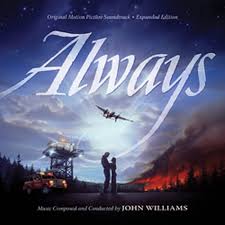
James Horner - Field Of Dreams (RCA/Novus 3060-1 LP)
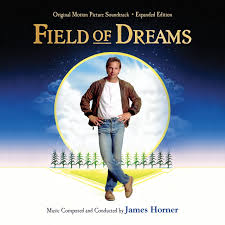
John Williams - Empire Of The Sun (Warner Brothers 25668-1 LP)
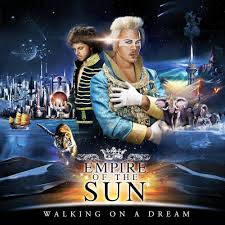
James Horner - The Land Before Time (MCA 6266 LP)
James Horner - Glory (Virgin 91329 LP)
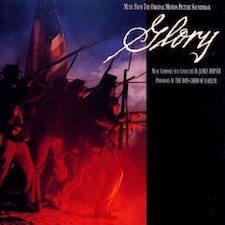
John Barry - Dances With Wolves (Epic ZK 66817 gold CD)
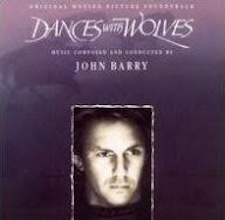
Danny Elfman - Batman Returns (Warner Brothers 9 26972-2 CD)
James Horner - Sneakers (Columbia CK 53146 CD)
John Barry - Chaplin (Epic EK 52986 CD)

James Horner - Patriot Games (RCA 0786366051-2 CD)
Danny Elfman - Sommersby (Elektra 9 61491-2 CD)
John Williams - Schindler’s List (MCA MCAD 11313 gold CD)
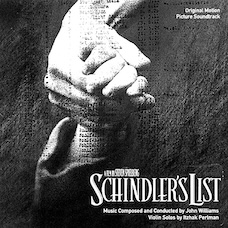
John Barry - My Life (Epic EK 57683 CD)
James Horner - Legends Of The Fall (Epic EK 66462 CD)
Danny Elfman - Black Beauty (Giant 9 24568-2 CD)
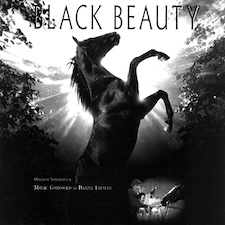
Marc Shaiman - North (Epic EK 66151 CD)
John Barry - The Specialist (Epic EK 66370 CD)
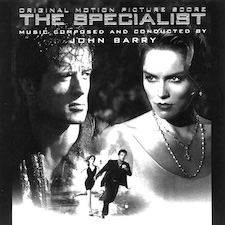
James Horner - Casper (MCA MCAD 11240 CD)
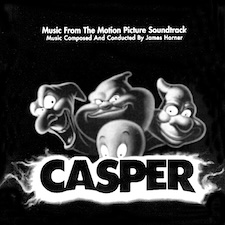
James Horner - Jumanji (Epic EK 67624 CD)
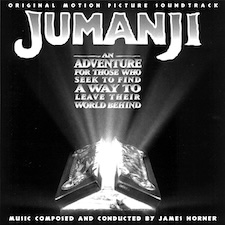
Maurice Jarré - Ghost (Milan 7313835733 CD reissue)
Orchestral Soundtrack Suites:
John Barry - Moviola (Epic EK 52985 CD)
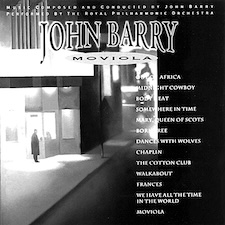
John Barry - Moviola II (Epic EK 66401 CD)
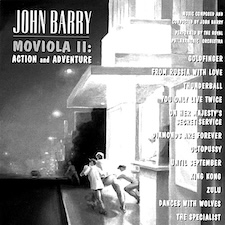
These are but a few of the soundtracks engineered by Shawn Murphy between 1981 and 1995. Among the others: Country, Jacob’s Ladder, Edward Scissorhand, Patriot Games, Clear and Present Danger, Nixon, Sabrina, Apollo 13, and Outbreak.
By all means hunt down an LP of Glory, it has everything you’d want from a great recording and it’s one of Horner’s most inspired works. Chaplin is another outstanding recording done at Abbey Road, Murphy’s favorite room. Check out track seven. Another winner is Batman Returns, which has subterranean bass and superb soundstaging and imaging. Put your seatbelt on and play track five. The opening minutes of Casper has some of the deepest bass I’ve ever heard recorded, and the rest ain’t shabby sounding either. My notes say “Track three!!!!! Warm! Superb!”. For Legends of the Fall, recorded at Air Studios in London, my notes say “stunner,” “Glory-like,” “great piano!”, “dreamy, haunting,” and "great bass drum!—check out track four.” Patriot Games’ notes read “superb imaging, dynamics, drums, great one!, contains ‘Harry’s Game’ from Clannad, highlight: track four.” Notes for The Specialist read “big, deep stage, good piano, typical Murphy.” Notes for Sneakers read “opening credits outstanding! Vocals, chorus adds interest. Great focus and bass.” Obviously you have to like the music, but any of these discs offer demo quality sound.
The Ghost CD which has just been reissued with bonus tracks (late fall ‘95) is an all digital recording, with some tracks recorded by Robert Fernandez at Burbank Studios and others by Murphy at Columbia. Remix is by Murphy. The digital recording offers very deep and tight bass, smooth, unctuous highs, and a flourescent on black velvet soundstage. Overall, a very atmospheric, mysterious, and effective score from Jarré—a master—with lots of modern synthesizer effects added on top of orchestrations, plus The Righteous Brothers’ version of “Unchained Melody,” ironically written by Alex North for a 1950s prison movie.
If I had to recommend one disc it would be Moviola, which features John Barry conducting a suite of his best themes including “Out of Africa,” “Midnight Cowboy,” “Body Heat,” “Somewhere In Time,” “Born Free,” “Dances With Wolves,” “Chaplin,” “The Cotton Club,” and “Moviola.” The Abbey Road recording is stunning—you’ll melt into your chair from the string sound. Moviola II, while somewhat darker sounding and not as airy (though it was recorded at Air Studios) is also worth picking up: it contains a James Bond medley that’s fun, including “Goldfinger,” “The James Bond Theme,” “From Russia With Love,” and “Thunderball” as well as an expanded Dances With Wolves suite, plus other Barry themes.
Of the vinyl issues, (aside, of course, from Glory), John Williams’ Empire Of The Sun track sounds all analog and offers outstanding sound and especially wide dynamics. The Field Of Dreams is disappointing in that it sounds generated from a mediocre digital transfer: homogenized strings, lumpy, formless bass, etc, though the music has some fine moments. Parenthood is classic Randy Newman “Americana,” with a dynamic and somewhat aggressive sound on top. If it’s generated from a digital transfer, it’s a good job. The Land Before Time is a cutesy animated cartoon about dinosaurs, but the Abbey Road, London Symphony Orchestra recording is gigantic—warm and inviting—and sounds all analogue. If you run into it as I did, for $2.98 or so, check it out.


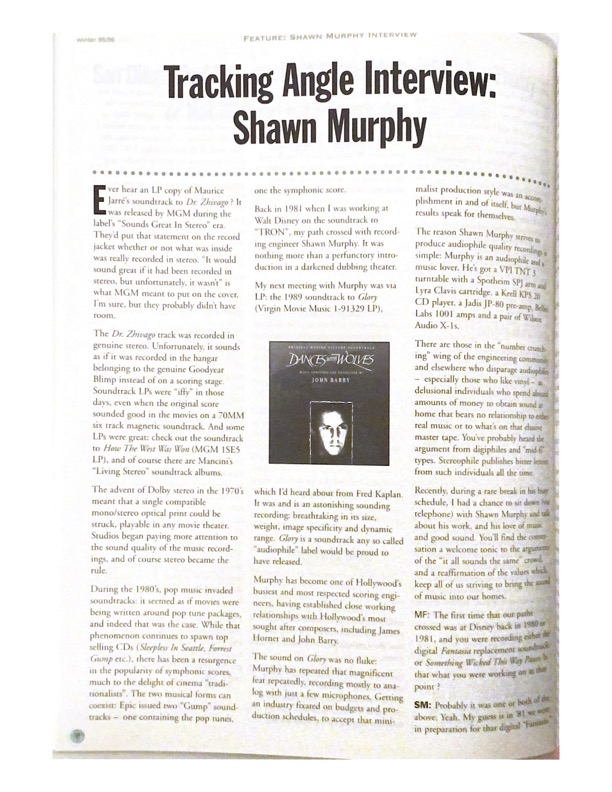






































.png)








